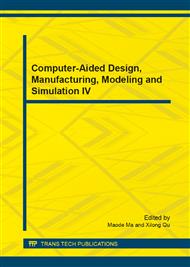p.36
p.41
p.46
p.51
p.56
p.61
p.66
p.71
p.77
Research on Integrated Simulation of Space Robot Mission
Abstract:
This document mainly focuses on the design and implementation of the space robots mission simulation system. Its overall design and achievement are put forward, some especial simulation factors are imported and integrated, such as the dynamics model, constraint model, environment model and other external disturbance. Being testified, the simulation system is capable of working out the problems, such as simulating the process of space mission, verifying the ability of in-orbit mission, evaluating the feasibility of key technologies. The total scheme provides a suit of effective method for the analysis and validation of space robot mission.
Info:
Periodical:
Pages:
56-60
Citation:
Online since:
October 2014
Authors:
Keywords:
Price:
Сopyright:
© 2014 Trans Tech Publications Ltd. All Rights Reserved
Share:
Citation:


